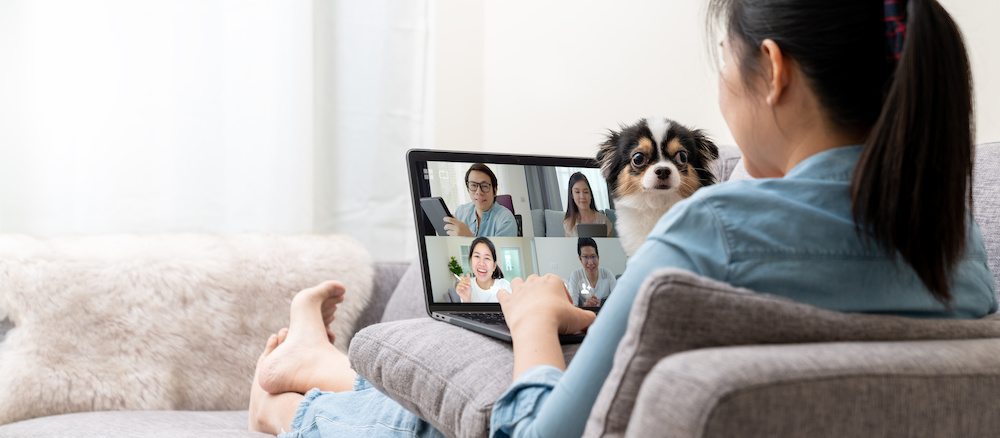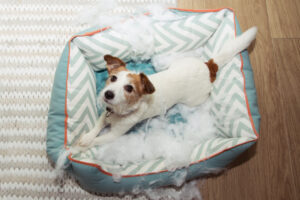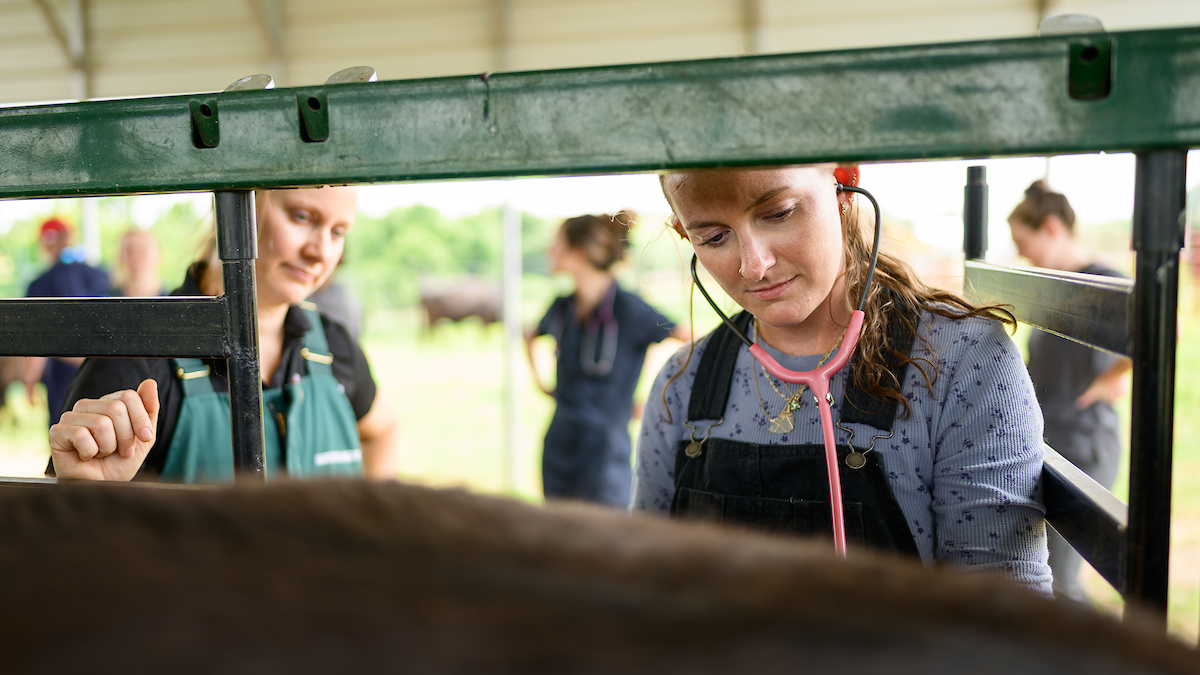Adjusting Pets to Life After COVID-19 Quarantine

For many Americans, this month marks a turning point in life as we’ve known it for more than a year.
Many are going back to work or school in person for the first time. Children are readying for a return to the classroom.
And pets? Well, they’re facing some significant changes, too. Pets have gotten used to COVID-19 life, as well. They’ve seen their owners more than ever before. They don’t see their owners leave as frequently. Feeding and walking times may have changed.
As the country returns to semi-normalcy, we spoke with Margaret Gruen, assistant professor of behavioral medicine at the NC State College of Veterinary Medicine, about how this shift in post-quarantine scheduling may impact pets — and how you can help ease them back into the routine they once knew so well.
Many people have either been working from home or have kids who have been at home for school for more than a year. What impact has that had generally on our pets?
The impact has varied a lot for different pets. For many, the increased social contact has been really positive. As a society, we often leave our dogs and cats home alone for extended hours during the week.
As social creatures, this can be difficult for many of them as they don’t get enough contact, social interaction or exercise. This definitely changed during the pandemic.
But for some animals, there was also a shift to their schedule with less opportunity for rest and sleep during their normal sleep times. And for some dogs, the lack of personal space with very little quiet time could be difficult. It’s important for dogs and cats to be able to take a break, too. On balance, I think it was positive, but there were some negative impacts as well.
How have pets had to adapt to the quarantine just as their owners have?
In similar ways, with changes to routines and social interactions. For dogs, there was less opportunity to see and meet people and other dogs, and many of them got out of practice for these interactions (as many of us did, too).
In response to the pandemic, lots of people did get outside more with their dogs but didn’t let them interact in the same way as before. There was also the sharing of space and finding that your favorite resting spot might now have been changed into a home office. The impact of this was different for different pets, depending on their personalities, family interactions and more.

Are there ways to prepare pets for the changing situation? Do some pets have more pressing needs than others?
I think all pets will have some adjustment as people go back to work and kids go back to school. Many people may end up working flexible hours or converting a temporary home office into a permanent one.
While there is some preparation that can be done for all pets, the two groups of dogs who will have the most pressing needs are those who had separation anxiety before the pandemic and those who were adopted during the pandemic and have never had their owners be gone for long periods of time.
We are recommending that well in advance of any major changes to routine, people begin to prepare their pets for the change by gradually getting them used to being left home and work on making sure they are comfortable in the areas they will be left in.
Whether that is a crate, a room with a baby gate or loose in the house, owners need to make sure that the dogs are relaxed and calm in that space.
What type of behavior should you look out for in your pets as you go back to work or school? What would be the most concerning?
The range of concerning behaviors that we see go from laying by the door watching for their people and whining and barking while alone to significant destruction, especially of areas near the door.
This has a real welfare impact on dogs, even dogs who are just laying by the door are often vigilant — watching, waiting and looking up at every noise —and not getting the rest they need. The ones who are destructive when left alone can damage property and can hurt themselves in the process, with broken teeth or nails.
One sign we will often look for is whether dogs eat food or treats that are left for them. Most dogs with separation anxiety are too anxious to eat while alone, so a filled Kong toy that looks the same when you return as when you left can be a sign that your dog is anxious while you are away. We do see separation anxiety in cats, too, but it’s less well-characterized.

Which pet behaviors would be considered “normal” or perhaps not that concerning.
There have been some interesting studies that have looked at videos of dogs with and without separation anxiety, so we do know some about what dogs normally do when left alone.
Dogs without separation anxiety spend the majority of their time sleeping or resting but do show behaviors including barking, exploring their environment and watchful waiting (called “orienting to the environment” in studies).
Some of these behaviors can be considered “normal.” The big difference between those dogs and dogs with separation anxiety was in the time spent doing them. An occasional bark or howl is normal, but prolonged barking or howling is not.
Are there certain characteristics of pets that may make it more difficult for them to adapt to the change?
Pets who are more anxious overall or have a history of separation anxiety are likely to have a more difficult time with the change. Also, dogs who have never known another type of schedule, so those who were adopted during the quarantine, may need time to adjust. We want to think through what the future will look like and then prepare pets for it.
Owners can practice leaving home without their pets for short times, especially around the time they might leave to go into work, and gradually building up the time they are gone. A dog of any breed can develop separation anxiety.
It’s like taking small steps into the water instead of jumping into the deep end.
What’s the single most important thing to keep in mind for your pets as we adjust to going back to a semi-normal work and school routine?
I think the answer is in the question: routine. Dogs and cats do best with predictable routines and often are more likely to show anxiety during multiple departures or routine absences.
Many dogs do fine with change, but for some dogs, the flexible work schedule can be more difficult than a more routine one, and having as predictable a schedule as possible will be helpful. Also working with dogs to make departures low-key and positive, like having a special food treat or food-filled toy, can be really helpful.
The technology is so good now that owners can watch their dogs over video cameras and monitor how they are doing. This is important information to have as dogs who are very anxious when left alone need a treatment plan that includes behavior and environmental modification and sometimes medication to treat anxiety.
~Jordan Bartel/NC State Veterinary Medicine


